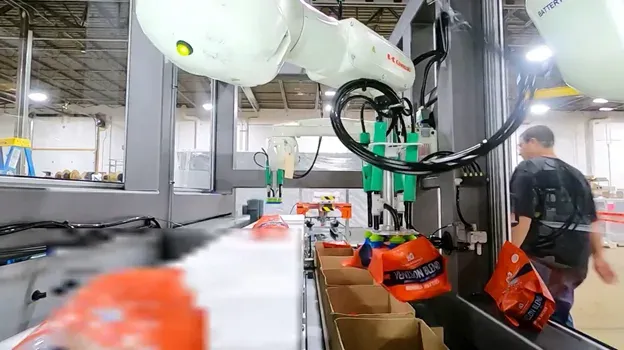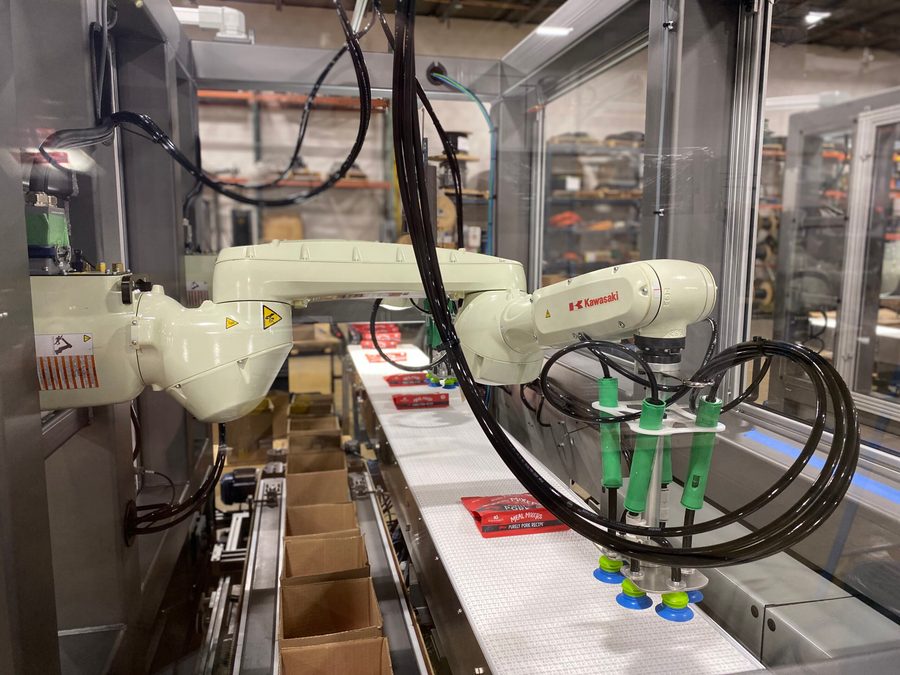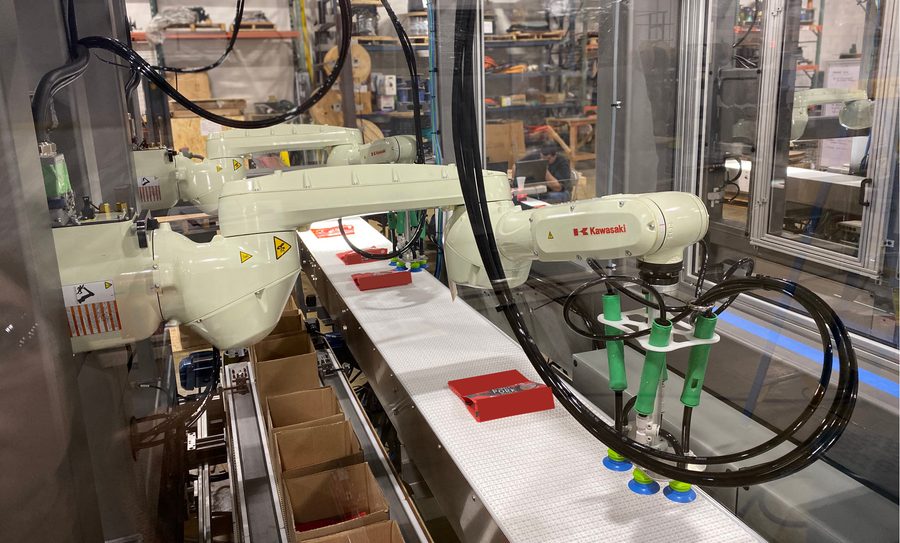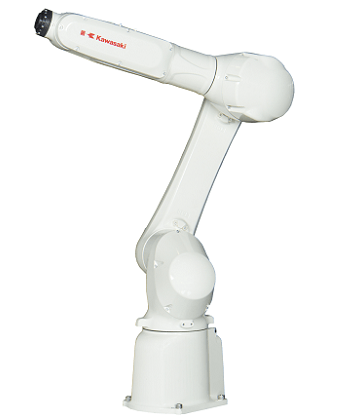
- IndustriesFood & Beverage
- ApplicationsAssembly, Material Handling
- Robot SeriesRS series
System designed by:

OVERVIEW
Today’s labor market is changing; Deloitte projects as many as 2.4 million manufacturing jobs will go unfilled by 2028.
As human workers become increasingly difficult to find, automation gives manufacturers the flexibility they need to grow their business without depending on scarce human labor. To avoid this issue, the customer reached out to WI-based integrator Midwest Engineered Systems (MWES) to automate the box packing process for their packaged food. MWES designed a custom box packing cell that utilized Kawasaki’s high performance robots and software to surpass initial objectives.


CHALLENGES
- Inconsistent labor resulted in inconsistent production
- System must distinguish between different box sizes and product types
- Robots must pack 50 bags per minute with an 85% overall equipment effectiveness rate
The customer sought an automated solution that would allow them to rely less on scarce human labor. In addition, they needed a system that facilitated growth through form and function. Meaning the design needed to be mobile, compact, and capable of handling different product and box sizes.

SOLUTION
- Two wall-mounted Kawasaki RS007L robots handle bagged product using vacuum grippers
- Conveyor tracking and Kawasaki K-VFinder vision software used to monitor product
- Custom, mobile cell designed to accommodate different box sizes and product types
The customer’s existing bagging machine places bags onto a conveyor that feeds into the cell. Once the product reaches the Kawasaki K-VFinder vision system, a camera takes a photo. Next, the vision system passes this data on to the first robot along with the conveyor tracking data. The robot uses uses this to determine the position and series of pick points for each bag. Simultaneously, operators load boxes onto a secondary conveyor underneath the robots. The robots pick each bag and drop them into the box below.
Flexibility achieved
When operators need to add a new product, they simply type the bag dimensions, weight and box size into the HMI, and assign a new product number. MWES installed a hand crank that adjusts the box conveyor’s place in the cell, allowing for different sized boxes and giving the customer flexibility. When the operator needs to pack a different product, they simply update the product number on the HMI and turn the hand crank.
To add to the cell’s flexibility, its compact size makes it possible for a forklift to move it anywhere in the customer’s facility. Because the cell only needs power, air and EtherNet connection, so the customer can get started in as little as one day. This is key for a growing manufacturer, says Steve Phelps, MWES Sales Engineer. “This is typical for a packaging environment… and with a customer that’s just getting used to automation and is in a growth phase, they may need to move things around their facility periodically.”
The right robot
MWES chose Kawasaki RS007L robots for this box packing cell because of their reach, payload and high-speed capabilities. The robots’ 7 kg payload, 730 mm reach, and flexible mounting options made them ideal for this compact cell, in addition to their through-arm cable design. The robots’ design enables the housing of vision cables, sensor harnesses, air lines, and other components inside the arm structure. This prevents interference with peripheral equipment, and allows for operation in tight installation spaces.
RESULTS
- Robot can pack up to 80 bags per minute without drops
- Number of operators reduced by up to 3, redeployed to new roles within facility
- System’s compact and versatile design gives customers much-needed flexibility
MWES says the Kawasaki RS007L robots can pack up to 80 bags per minute without drops, which exceed the throughput and equipment effectiveness goals set by the customer. The system allows the customer to redeploy 2-3 workers each shift to higher-level roles better suited for their skills.
According to the integrator, the box packing system is conducive to further automation. A downstream palletizing system could prepare the boxes for distribution, or box erectors could be installed upstream for increased efficiency.
